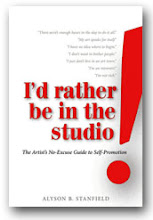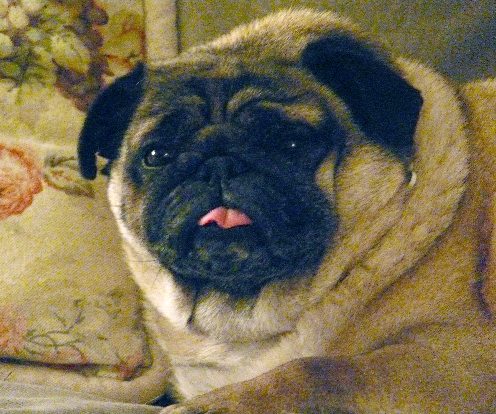Saturday, February 28, 2009
Farm Geese, Toulouse Geese, Art tip # 11
Friday, February 27, 2009
Farm Geese, Art Tip # 10
Wednesday, February 18, 2009
Farm Geese, Toulouse Geese, Art tip #9
Tuesday, February 17, 2009
Crow, Oil Workshop Students, Art tip #8
Monday, February 16, 2009
Succulents, Allied Artists of America, Artist tip # 7
Monday, February 9, 2009
Artichokes, Artist Statement, Art tips #6
Tip for seeing color: punch a little hole in a 2"x3" cardboard. Use it to "isolate" color areas in your still life set-up or plein air view. Mix and paint that color. Do this for every main shape/area of your painting. You will mix incredible colors..no more mud. Carry this little "spot screen" with you on a walk. Ask yourself; what color is that building? road? mountian? car? Especially look at shadows. Now use the spot screen on the same objects. Wow! Paint what you see, not what you know.
Friday, February 6, 2009
Tuxedo Cat, Oil Pastel, Art tips #5
Artist Statement 2008
Thank you for taking time today to visit my exhibit!
I have been a professional artist for nearly 40 years, living and working in my Ketchum home and studio since 1978 with husband Gary, son Corey and pug dog Jack
My current direction is painting the still life in oils. I use traditional oil painting techniques on canvas, linen or gesso board. Craftsmanship is very important to me. I use only the best materials in time honored ways that will assure my work stays true to form. Small paintings are given the same careful attention as larger work.
My still lifes are about finding the beauty in everyday objects. I am especially drawn to vintage objects that have had a previous life.
The most interesting part of painting to me is the composition or design phase. The beauty of still life is that I am the conductor; I get to move the objects around until I see an arrangement that is pleasing and dynamic to my eye. I look for relationships of shapes, color, contrasts of light & dark and, of course, what is to be the center of interest. I employ these same elements of design to landscape or animal paintings, too.
Because my paintings are strong in design and color they bring life and energy to a room.
Fellow artist, Elizabeth Floyd said “I like the way Jennifer’s paintings seem to tell a story, as if we are getting a glimpse of someone’s daily life, with an action about to take place that will alter the vignette we have just been privileged to witness.”
In the summer and fall I enjoy teaching workshops and sharing my artistic process with others.
Here's the new, shorter version:
Artist Statement 2009
"The current direction of my art is painting the still life in oils. My still life paintings are about finding the beauty in everyday objects. I am especially drawn to vintage objects that have had a previous life.
A fellow artist said “I like the way Jennifer’s paintings seem to tell a story, as if we are getting a glimpse of someone’s daily life, with an action about to take place that will alter the vignette we have just been privileged to witness.”
Thursday, February 5, 2009
Animal Shelter of the Wood River Valley, Chicago Cows, Labrador Retreiver, New Mexico Painted Ponies
 Detail
Detail Our Pug Jack
Corey's Sweetie Rat
All image copyright J.Bellinger
I need to get back in the studio and paint! Prepping images for my new web site is taking tons of time. My oil painting workshop is going well, day 3 of a 4 day class completed. My students are coming over to the studio this Saturday.
I decided to post images of "Wood River Pet Lab". Our local animal shelter has used these fiberglass lab forms for big fund raisers. The event was patterned after the Chicago Cows, New Mexico's Painted Ponies, etc. Artists are commissioned to paint them and then they are auctioned. I have completed three of them to date. It is something to see 40 or more together on one large room. Artists are so creative. My approach is pretty traditional. One of my favorites was covered entirely with coffee beans. The artist even covered a base with the burlap coffee sack and the dog is holding a coffee cup/saucer in his mouth! It now resides in a local coffee shop called Zaney's.
Lots of money raised for our local no-kill shelter.
Tuesday, February 3, 2009
Corgi dog portrait, Leonard Wolfe, Art tip #4
Visit my art blog friend, Mary Sheehan Winn to see a super fun YouTube video she posted today.
Monday, February 2, 2009
Lemons & Mandarins, Artist's Statement, Art tip #3
Sunday, February 1, 2009
Apricots, Oil Painting Workshop, Art Tips

















